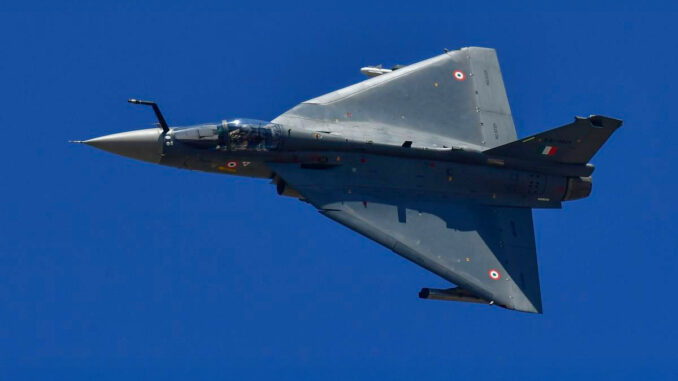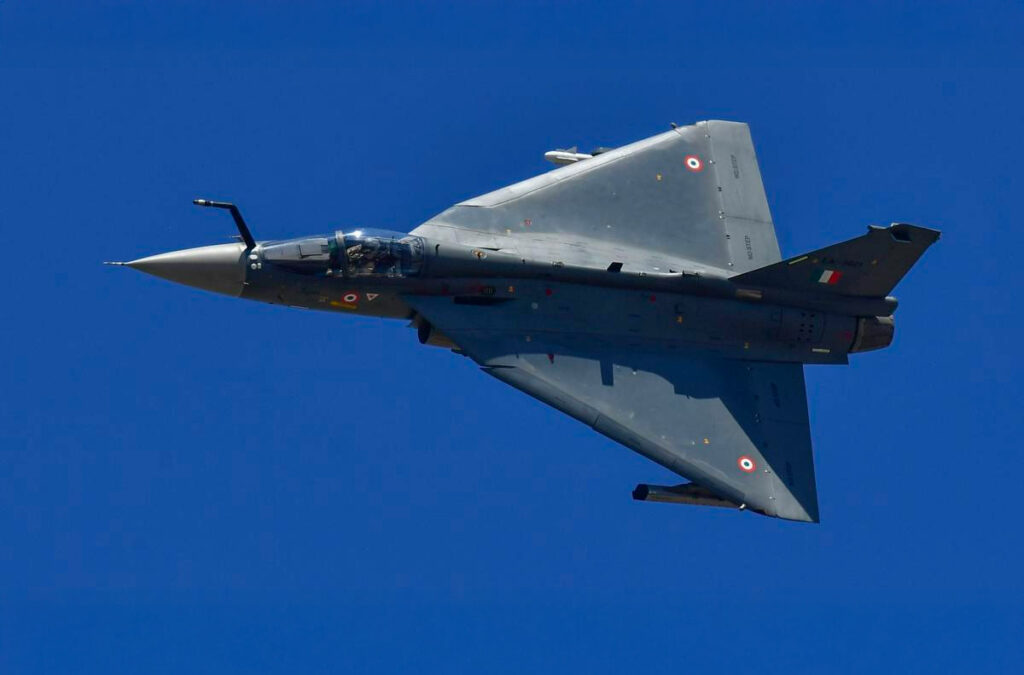
Brazil is interested in the HAL Tejas, against a backdrop of possible exchanges with the C-390 Millennium. What are the facts, figures, and industrial stakes?
Summary
The HAL Tejas is back in the export spotlight with reports of a possible exchange between India and Brazil: Brasilia is reportedly considering the acquisition of Tejas Mk1A (and LCH helicopters) in return for India’s purchase of the C-390 Millennium for its medium transport program. Official signals are cautious: although Embraer and Mahindra signed a cooperation agreement on October 17, 2025 to promote the C-390 in India, Brazilian officials denied on October 18 that a formal “swap” had been agreed. In the background, the Força Aérea Brasileira must withdraw its F-5Ms and complete its fleet of Gripen E/Fs, while the Indian Air Force is looking for a modern and industrializable solution to replace its medium transport aircraft. Technically, the Tejas Mk1A (AESA, unified electronic warfare, 8 hardpoints, Mach 1.6) fits the need for a light “second fighter.” Industrially, the deal would be a lever for offsets and local content on both sides. Nothing has been signed, but the strategic, technical, and industrial framework makes the scenario plausible, subject to finances, engine/radar schedules, and political alignment.
Rumors of an India-Brazil exchange agreement: where do we stand?
India-Brazil “exchange discussions” emerged in 2024 and gained momentum again in September-October 2025: several specialist media outlets reported on a plan whereby India would select Embraer’s C-390 Millennium for its Medium Transport Aircraft program, while Brazil would acquire Tejas Mk1As to replace its aging F-5Ms and even supplement the Gripen E/Fs already on order. On October 17, 2025, a concrete milestone was reached: Embraer Defense & Security and India’s Mahindra signed a cooperation agreement to promote and industrialize the C-390 in India, with the ambition of making the country a regional base for the program. The following day, however, Brazilian officials rejected the idea that a “swap deal” had been concluded or presented as such during official meetings in New Delhi. In short: there are talks and a serious industrial framework, but no announcement of a reciprocal and simultaneous contract.
The strategic context that makes the deal plausible
On the Brazilian side, the Força Aérea Brasileira (FAB) is modernizing its fighter fleet with 36 Gripen E/F (F-39) aircraft to be delivered by the early 2030s. The F-5EM/FMs are to be retired by the end of the decade and the A-1Ms (AMX) are being phased out. A light, multi-role fighter with low flight costs could serve as a “second echelon” for air policing and advanced armed training, freeing up the Gripen for superiority and interdiction missions with Meteor/IRIS-T missiles. In 2024, the FAB acknowledged the need to examine “complementary platforms.”
On the Indian side, the Indian Air Force needs to renew its tactical and operational transport fleet. The C-390 has a payload of around 26 tons, a high cruising speed (turbofan), modern avionics, and competitive operating costs compared to the C-130H/J. The Embraer–Mahindra agreement provides a credible industrial vehicle for selection in India (localization, offsets, maintenance, supply chain). . In addition, India has secured a second large domestic batch of Tejas Mk1A aircraft (97 units) for 2025, confirming the program’s sustainability and the ramp-up of HAL—a positive signal for any export customer.

The technical profile of the Tejas Mk1A that interests Brasilia
The Tejas Mk1A is a light, single-seat, delta-wing, “4.5” generation multi-role fighter powered by a GE F404-IN20 engine. It reaches Mach 1.6, operates at altitudes of up to 15,200 m, and is equipped with an AESA suite (EL/M-2052 or Uttam) and a unified electronic warfare system (UEWS) with an external jammer. Eight hardpoints can carry approximately 4 tons of weapons (Astra BVRAAM, ASRAAM, guided bombs, targeting pods). The typical combat range is around 500 km, which can be extended via in-flight refueling. For the FAB, which covers a vast continental and maritime airspace, this profile is well suited to air policing, light attack, occasional deterrence in the Amazon, and cost-effective interception missions.
Key figures for evaluation
- Max speed: Mach 1.6 (≈ 1,975 km/h), ceiling 50,000 ft (15,240 m).
- Typical combat radius: ~ 500 km (refuelable).
- Payload: 8 hardpoints for ≈ 4,000 kg.
- Radar: AESA (EL/M-2052 or Uttam in development).
- Electronic warfare: UEWS with DRFM jamming and integrated RWR.
These parameters position the Tejas as a credible alternative to other “light fighters” for forces seeking a high/medium intensity mix alongside a heavier or more expensive fighter in terms of flight time.
The needs of the Força Aérea Brasileira and the possible articulation
The FAB already operates to NATO standards in several areas (data links, guided munitions, ISR) and is undergoing a doctrinal transformation with the Gripen E/F (modern sensors, Meteor, survivability). A Brazilian Tejas Mk1A would play the role of “complementary fighter”:
- Air policing from secondary bases, with lower operational costs.
- Advanced armed training and operational conversion, while remaining combat-proven if necessary.
- Coverage of sparsely populated regions (North/Northwest) and occasional reinforcement of detachments.
On the industrial front, partial assembly or local MRO (Gavião Peixoto) could be part of Brazil’s policy of technological autonomy, while India would push Make in India content (structural assemblies, wiring, composite parts), creating a cross-flow of value. The question of radar standards (Uttam vs. EL/M-2052) and electronic warfare (UEWS vs. Israeli solutions) will remain central to interoperability and sovereignty.
Transportation: what the C-390 would bring to the Indian Air Force
The C-390 Millennium (KC-390 in tanker version) combines a payload of ~26 tons, a modular cargo hold, superior transit speed (turbofan), and aero-drop/MEDEVAC/evacuation capabilities. Eight aircraft were delivered to the FAB in early October 2025 out of 19 ordered, with a fleet totaling more than 14,000 hours. For India, which needs to replace aging An-32s and optimize strategic logistics, the Brazilian aircraft is positioned against existing solutions (C-130J, A400M, modernized Il-76). The Embraer–Mahindra agreement explicitly targets local industrialization and the creation of a regional hub—a decisive asset in a tender where local content carries significant weight.
Technology transfers and offsets, the crux of the matter
Neither Delhi nor Brasilia will commit without tangible industrial returns. On the Indian side, Embraer and Mahindra have announced localization plans (supply chain, MRO, tools, training), which lend credibility to the selection of the C-390, provided that volumes, timelines, and financing are aligned. On the Brazilian side, the appeal of the Tejas lies in the possibility of a package deal: integration of sub-assemblies in Brazil, heavy maintenance at Embraer, and access to certain components (composites, avionics, mission software) within a government-to-government framework. The calibration of these offsets will determine the final balance.
Risks and unknowns that still remain
- “Swap” narrative vs. contractual reality: official Brazilian denials have reiterated that no “barter” has been agreed upon. More likely: two separate decisions, politically coordinated but legally independent.
- Engine schedules: deliveries of F404 engines have been delayed, but are now stabilizing (target rate: two engines/month). HAL’s ramp-up also affects export credibility.
- Onboard electronics: the exact share of Uttam AESA and imported equipment (radar/SEP) remains an issue, both in terms of availability and sovereignty and export licenses.
- Budgetary capacity: India has just authorized the purchase of 97 Mk1As; on the FAB side, any decision on a “second fighter” will require multi-year financial planning, while the Gripens continue to arrive.
- Alternatives: Brazil is keeping its options open (continuing with Gripen, second-hand market, F-16/Block 70, selective modernization), while India is also evaluating other logistical solutions for the transport segment.
The military value of a Tejas–Gripen tandem for Brazil
A mixed Gripen E/F + Tejas Mk1A fleet would give the FAB a two-tier architecture:
- a “premium” tier for superiority and penetration (sensors, Meteor, networked warfare),
- a “light” tier for presence, alert and support, agile and sustainable, useful for armed operational training, air policing and extended territorial coverage.
This model, already proven in other air forces (a mix of heavy/medium fighters with light aircraft), optimizes the effects/costs ratio per flight hour. It would also facilitate the management of Gripen airframe hours, preserving availability for high-end missions.
The geopolitical significance of a cross-agreement
Beyond the aircraft, the deal would mean deeper South-South cooperation: India would export a complete combat system (aircraft, ammunition, training), while Brazil would expand the global base of the C-390 Millennium in Asia. The two national manufacturers—HAL and Embraer—would gain in references and economies of scale. For New Delhi, selling the Tejas to a G20 country would be a marker of international confidence and an accelerator of “indigenous” shares on Tejas Mk1A and Mk2. For Brasilia, establishing a presence for the C-390 in India—a market and industrial hub—would be a sustainable multiplier.
An outcome that is still open, but structured
At this stage, the official elements are: Embraer–Mahindra cooperation in place, real Indian need for transport, Brazilian interest in a “second fighter,” but no exchange contract signed. The next steps will be politically and industrially decisive: India’s choice of medium transport, Brazilian clarification on the format for replacing the F-5Ms, radar/countermeasure trade-offs on Tejas, and engine production rate guarantees. If these factors align, the Tejas–C-390 equation could become a game changer—less through “bartering” than through the creation of a solid, visible, and replicable bilateral value chain.
Sources
– Reuters, “Embraer and Mahindra sign agreement to promote the C-390 in India,” October 17, 2025.
– BharatShakti, “No swap deal on fighter jets or missiles, according to Brazilian officials,” October 18, 2025.
– The Defense Post, “India, Brazil Weigh Barter Deal for Military Aircraft,” October 7, 2025.
– Air Data News / Zona Militar, “Positioning of the KC-390 for India; Brazilian evaluations including the Tejas,” October 8, 2025.
– Saab, “The Brazilian Air Force has ordered 36 Gripen E/F,” accessed in 2025.
– Wikipedia (HAL Tejas; C-390 Millennium; List of active Brazilian military aircraft), technical data sheets and inventories, versions consulted in 2025.
– The Economic Times / Times of India, “Indian agreement for 97 Tejas Mk1A; F404 deliveries resume,” August–September 2025.
War Wings Daily is an independant magazine.